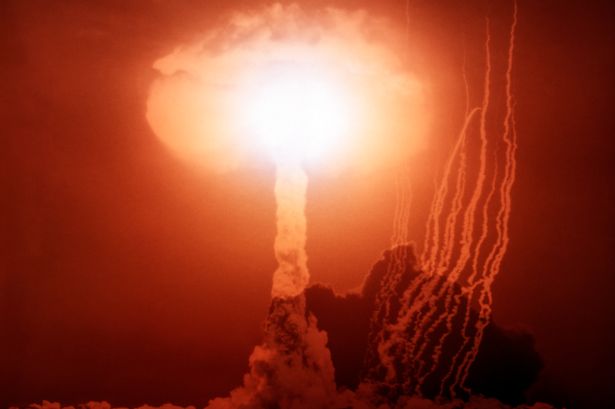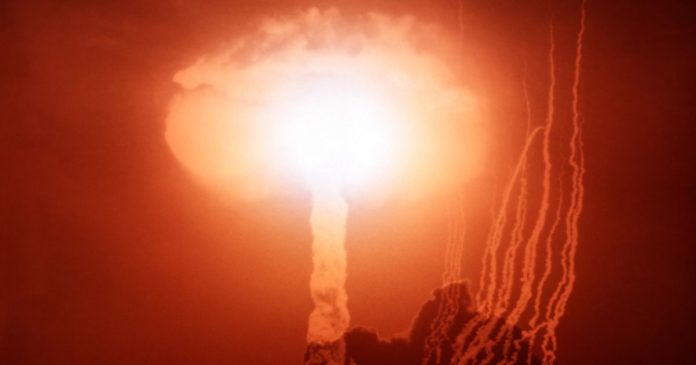
In 1986 there were 70,000 nuclear warheads in circulation across the globe and though the number has significantly dropped since then, the likelihood of nuclear escalation has risen, according to a Swedish arms watchdog
The likelihood of nuclear missile strikes has shot up to the highest level since the end of the Cold War, a new report has claimed.
After 35 years of gradual de-escalation, flare-ups between nuclear-armed states are predicted to continue into the next decade, according to the Stockholm International Peace Research Institute (SIPRI), an arms watchdog.
At the height of the Cold War - a nuclear stalemate between Russia and the US - there were almost 70,000 warheads circulating across the globe.
The number plunged to just 12,705 in early 2022, but though there are less nukes in the world - SIPRI fears nuclear strikes will become more likely in the next decade.
Writing in the report, SIPRI’s Weapons of Mass Destruction Programme Director Wilfred Wan said: “All of the nuclear-armed states are increasing or upgrading their arsenals and most are sharpening nuclear rhetoric and the role nuclear weapons play in their military strategies.”
“This is a very worrying trend,” he adds.
The researchers say the modest decrease of 375 warheads logged between 2021 to 2022 came as countries cleared out their older weapons.
Of the 12,705 warheads, a staggering 9,440 were in military stockpiles - meaning they were on standby for potential use.
Another 3,732 were deployed with aircraft and missiles while 2000 - mainly owned by the US and Russia - were kept in a state of “high operational alert”, the report adds.
It’s not only Russia and the US - who share almost 90 per cent of the world’s nukes - who are modernising their stockpiles.
The seven other nuclear-armed states - Britain, China, France, India, Israel, North Korea and Pakistan - are also in the process of creating more effective and deadly arsenals.
The report claims that China is engaged in a “substantial expansion” of its stockpile, including the construction of “300 new missile silos”.
Reversing decades of gradual disarmament promises, in 2021 the UK Government announced it plans to increase the ceiling of its total number of warheads.
Westminster added it will no longer disclose the figures for its operational and deployed warheads or missiles.
The same year, France also announced it would be developing a third-generation nuclear-powered ballistic missile submarine.
The nuclear programme remains a central element of North Korea’s national security strategy and despite conducting no test launches throughout 2021, the report believes the country now has as many as 20 warheads.
The SIPRI report adds the country has enough raw materials to produce as many as 45-55 warheads in total.
Mr Korda believes the current conflict in Ukraine has had a profoundly damaging effect on international relations and hampered “progress on disarmament”.
At the end of April, Vladimir Putin threatened the West with “consequences that you have never encountered in your history” for supporting Ukraine.
These veiled but very overt threats are indicative of the current state of heightening tensions and counterproductive to reversing the escalation, according to SIPRI.
“It’s going to be very difficult to make any progress on disarmament over the coming years because of this war, and because of how Putin is talking about his nuclear weapons,” Mr Korda said.
SIPRI Director Dan Smith added: “Although there were some significant gains in both nuclear arms control and nuclear disarmament in the past year, the risk of nuclear weapons being used seems higher now than at any time since the height of the cold war.”

